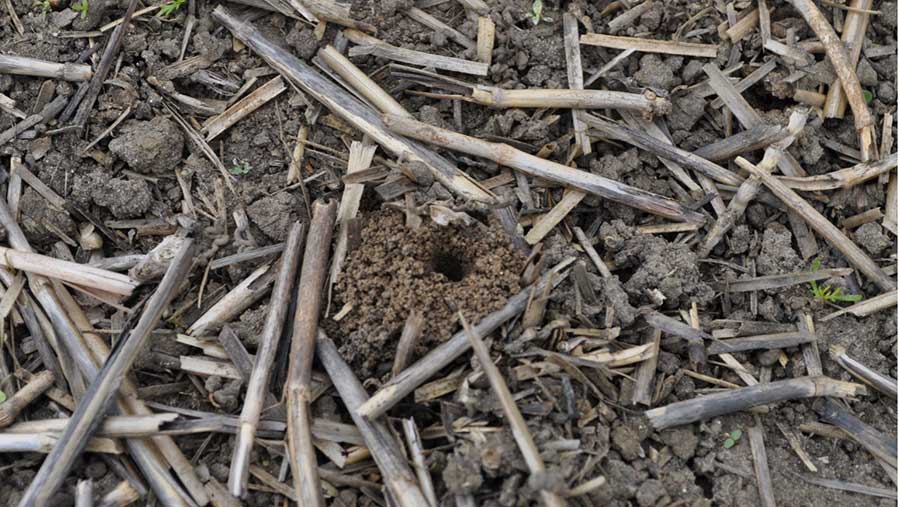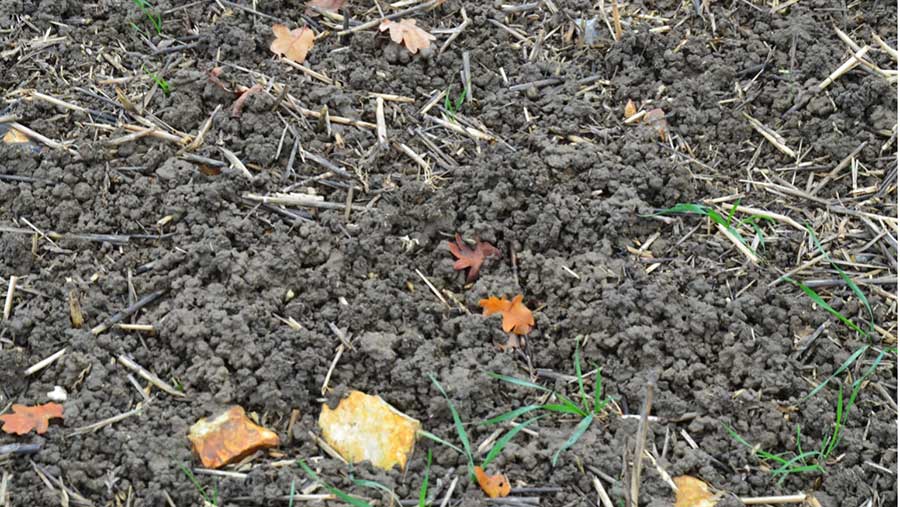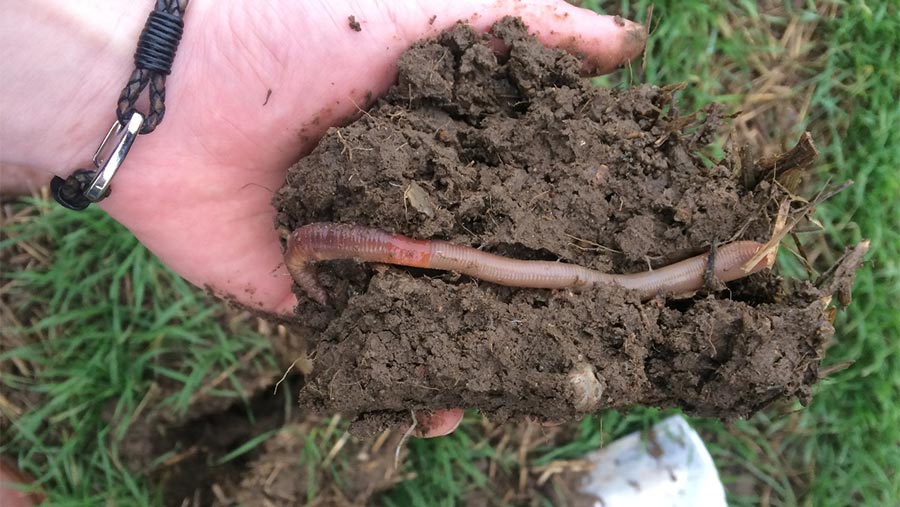Advertiser content
How Claydon Opti-Till® helps farmers improve soil health
One of the major benefits of using Opti-Till® direct strip drilling to establish crops is the improvement in soil health.
In the first few years of usage, soil becomes easier to work (reducing horsepower and fuel consumption) and when conducting stubble management and weed control operations, tilth is noticeably more friable than for soil that has been conventionally cultivated.
Leaving residue on the soil’s surface creates the ideal environment for earthworms to thrive. The worms process the crop residue which benefits the biological make-up of the soil, improves aeration and aids drainage.
Earthworms ingest soil and excrete it, leaving behind a myriad of nutrients that simple bacteria use as a food source; in turn, these bacteria interact with plant roots supplying them with important nutrients.

Earthworm burrow opening © Claydon
A 2014 meta-analysis study in the Netherlands by Jan Willem van Groenigen et al showed that on average earthworm presence in agro-ecosystems led to a 25% increase in crop yields and a 25% increase in above-ground biomass.
An AHDB worm survey carried out on the Claydon farm in April 2020 across 10 pits (garden spade size) gave an average count of 28.1 worms, including adults and juveniles.

Surface of field covered with earthworm casts exhibiting a high level of activity © Claydon
As the Claydon Opti-Till® system has been adopted globally over the past 20 years, further benefits have come to light, helping growers cope with weather extremes.
Moisture retention assists the establishment of the following crop in those areas that experience low rainfall and high temperatures.
In other areas where short, sharp rainfall events are becoming more frequent, Opti-Till® allows the soil to drain quicker eliminating ponding, providing that drainage systems and soil structure are good to depth.
Increases in organic matter (OM) and soil organic carbon (SOC) are other benefits when soil is left undisturbed and not inverted.
Soil organisms and roots are not desiccated and exposed to ultraviolet irradiation, earthworms and their burrows are left intact contributing to improvements in soil structure.

© Claydon
Following no cultivations for over 20 years the Claydon soils have OM scoring of 6.8% and SOC at 3.8% which is contributing to yields that are above the national average across the crop spectrum.
Cultivations can change soil density, affecting soil structure and inhibiting root development, capillary action and drainage.
Different densities of soil can lead to sedimentation blocking the natural pores in the soil which can lead to erosion of the topsoil.
An open soil with good pore space ensures that soil has a good balance promoting drainage, moisture retention and maximising rooting to depth.
A balanced soil will ensure that plant roots can utilise the soil, so harvesting nutrients and tapping into moisture, mitigating against weather extremes and maximising yield output in any given hectare.

© Claydon
Our experience and findings show that customers in many regions across an increasing number of countries are finding their soil health is improving with the added benefits of better yields and an increased ability for their crops to cope with weather extremes.
To find out more:
+44 (0)1440 820327
info@claydondrill.com
Provided by
Establishing a better way
